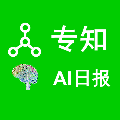Scene Graph Generation (SGG) aims to structurally and comprehensively represent objects and their connections in images, it can significantly benefit scene understanding and other related downstream tasks. Existing SGG models often struggle to solve the long-tailed problem caused by biased datasets. However, even if these models can fit specific datasets better, it may be hard for them to resolve the unseen triples which are not included in the training set. Most methods tend to feed a whole triple and learn the overall features based on statistical machine learning. Such models have difficulty predicting unseen triples because the objects and predicates in the training set are combined differently as novel triples in the test set. In this work, we propose a Text-Image-joint Scene Graph Generation (TISGG) model to resolve the unseen triples and improve the generalisation capability of the SGG models. We propose a Joint Fearture Learning (JFL) module and a Factual Knowledge based Refinement (FKR) module to learn object and predicate categories separately at the feature level and align them with corresponding visual features so that the model is no longer limited to triples matching. Besides, since we observe the long-tailed problem also affects the generalization ability, we design a novel balanced learning strategy, including a Charater Guided Sampling (CGS) and an Informative Re-weighting (IR) module, to provide tailor-made learning methods for each predicate according to their characters. Extensive experiments show that our model achieves state-of-the-art performance. In more detail, TISGG boosts the performances by 11.7% of zR@20(zero-shot recall) on the PredCls sub-task on the Visual Genome dataset.
翻译:暂无翻译




